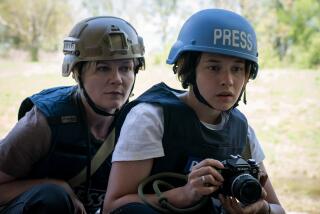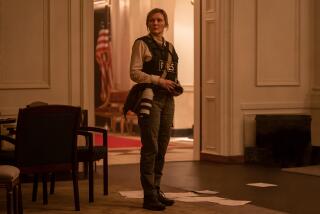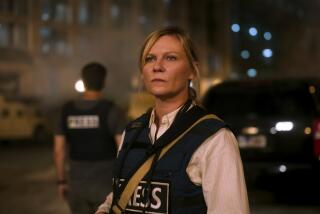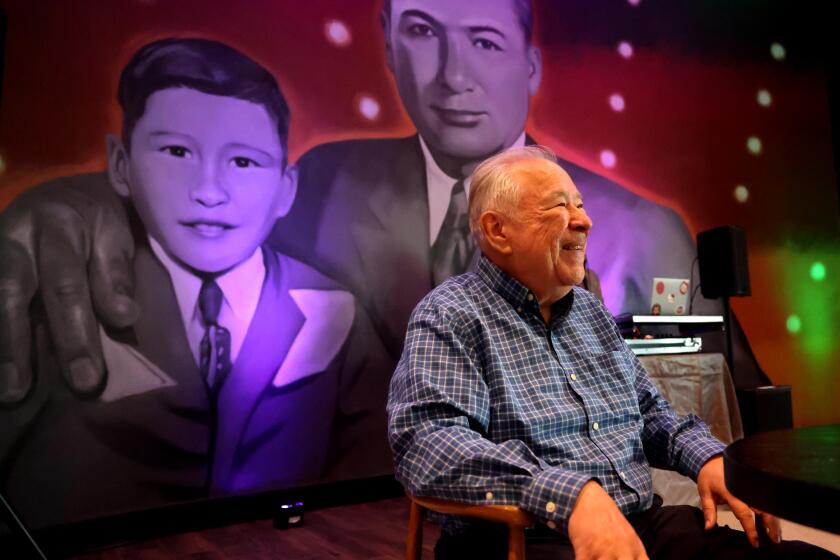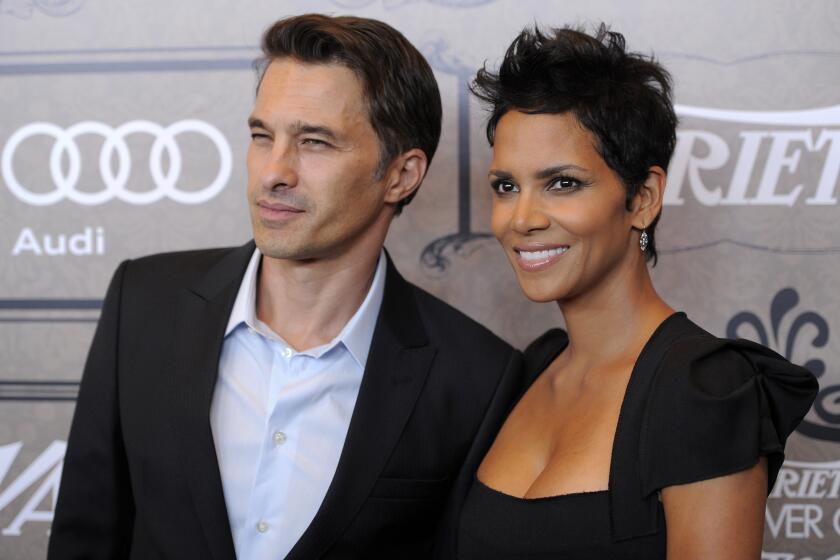‘Iraq in Fragments’ amounts to ravishing portrait
Documentaries dealing with the Iraq war are as numerous as those proverbial sands of the desert, but “Iraq in Fragments” stands out, both because of where it takes us and how it takes us there. Whether you’ve experienced all the previous films or none of them, this one demands to be seen.
The unprecedented three documentary awards “Iraq in Fragments” won at Sundance -- best director, best editing, best cinematography -- is an indication of one of the things that makes this film special. For James Longley, who directed, shot, co-edited, co-produced and did sound and music, has a sensibility that is as much artistic as it is documentary. He is a filmmaker with the kind of impeccable eye we are not used to seeing in works like this, someone who has a pictorialist’s sense of the power of imagery.
Also out of the usual is the way “Iraq in Fragments” uses its belief in the poetry of the everyday to concentrate on the lives of ordinary Iraqis. Though the impact Americans have on these lives is one of the film’s focuses, we rarely see the alien-like soldiers up close and personal. Instead, Longley concentrates on telling stories from three different parts of the country: big-city Baghdad, the southern part controlled by the forces of Muqtada Sadr and the farming communities of the Kurdish north.
Using cinema verite techniques, Longley tells these stories from deep inside his characters’ lives, using voice-over narration to reveal the human stories complicated by the crisis of invasion and occupation. This intensity of focus was possible because Longley spent two full years filming in Iraq. A Westerner who, like Sir Richard Burton a century ago, has the knack of disappearing into the Middle East, Longley stayed up to six months in a given location gaining remarkable access.
Here’s the filmmaker describing how he got the footage for the film’s initial Baghdad section involving an engaging 11-year-old boy named Mohammed: “Every morning for months on end I would drive out to the shop where Mohammed worked and wait around for hours, gradually becoming part of the furniture.
“I didn’t just want to bring the viewers into Mohammed’s neighborhood -- I wanted to put them inside his head.”
In addition to seeing the boy’s life with his abrasive employer, we get a vivid glimpse of Baghdad street life and an earful of dissatisfaction. “Why don’t they take the oil,” one man says to a friend about the Americans, “and leave us alone.”
More intense still are the vivid glimpses of life in the Shiite strongholds of Najaf and Nasiriya. We hear preachers insisting that “we will close every door of depravity opened by America”; we see religious processions featuring a parade of self-flagellators; we ride along with masked religious vigilantes.
The third fragment of this film takes place in the agrarian Kurdish north, where huge plumes of smoke come not from bombed-out buildings but a local brick factory. Here we meet farming families who are passionate about autonomy and eager for the economic benefits that freedom is likely to provide.
The key question behind “Iraq in Fragments” is implicit in its title: Will the country stay together? “Now it will be hard for Kurds, Sunnis and Shiites to live together, the future of Iraq will be in three parts,” says one man, while a young boy insists, “Iraq is a country. How can you cut a country into pieces?” Only the future will determine who is right.
Langley’s impeccably nonjudgmental camera knows exactly what details to record. Drawn from more than 300 hours of footage, the film’s all too brief 94 minutes mesmerizes with its insight and, rarer still, its beauty.
MPAA rating: unrated. Running time: 1 hour, 34 minutes. Limited release: Nuart, 11272 Santa Monica Blvd., West Los Angeles. (310) 281-8223.
More to Read
Only good movies
Get the Indie Focus newsletter, Mark Olsen's weekly guide to the world of cinema.
You may occasionally receive promotional content from the Los Angeles Times.
